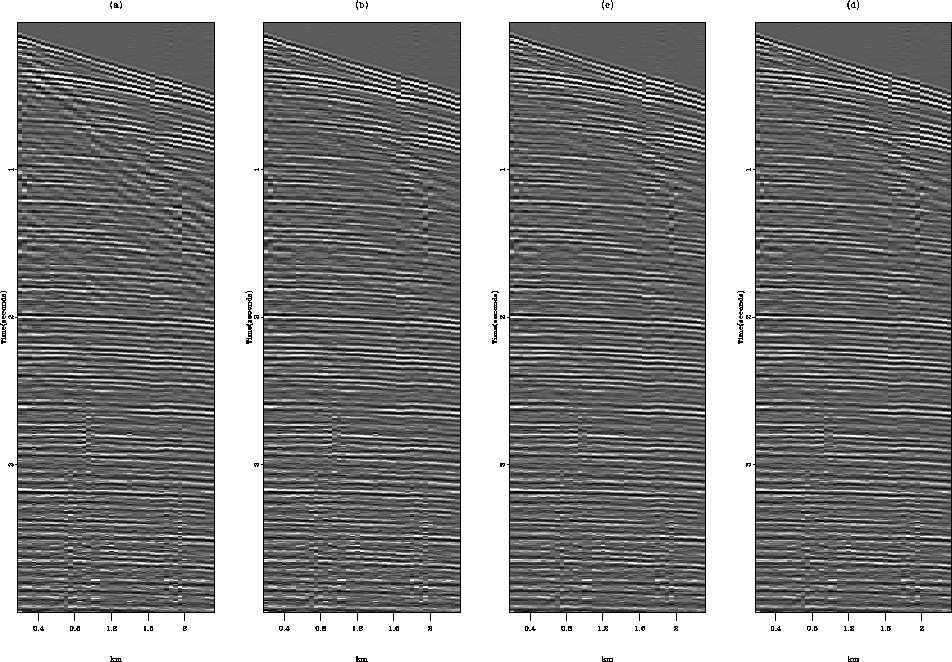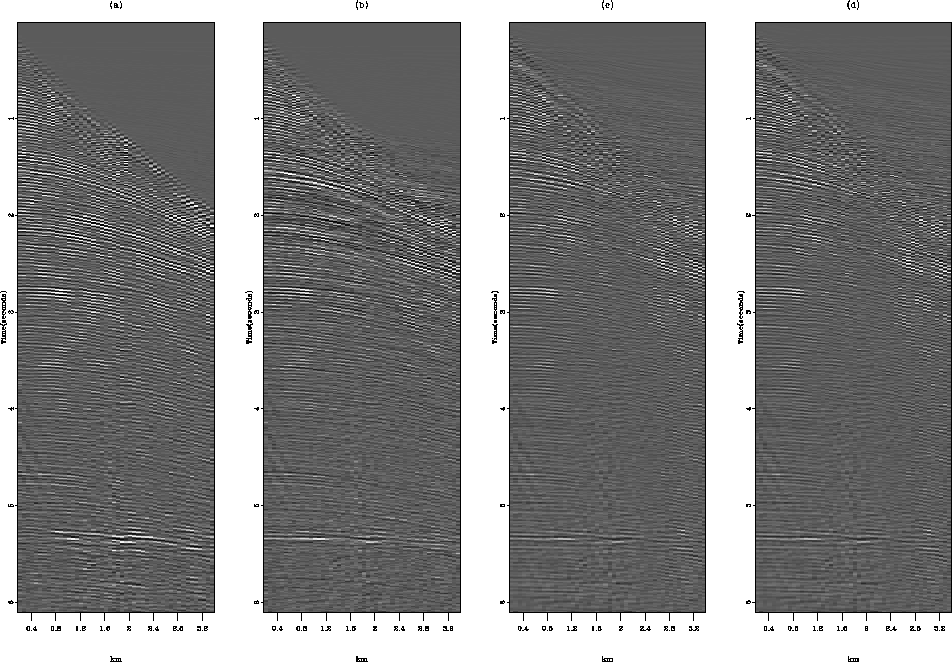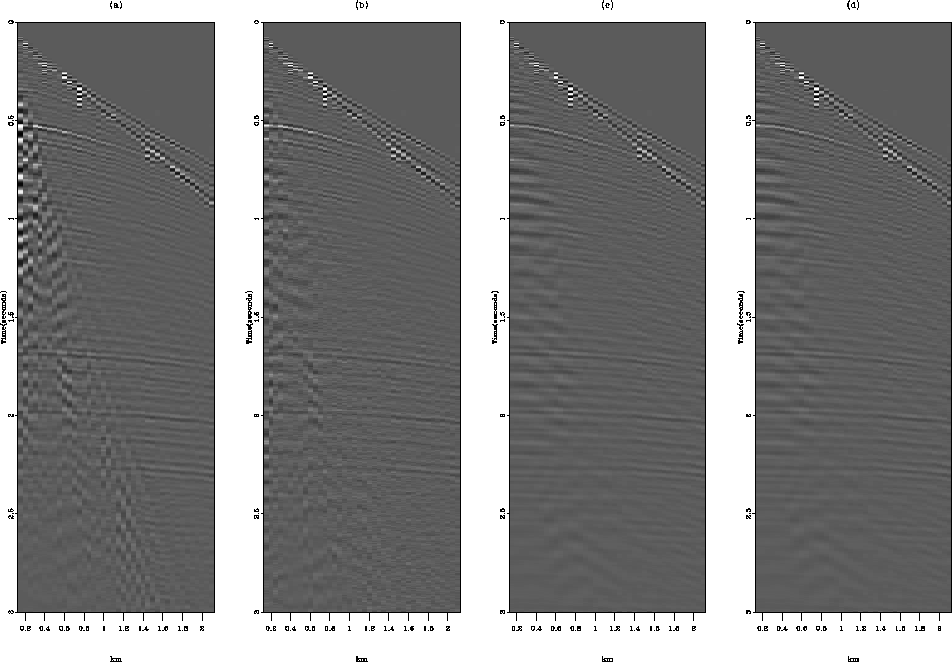




Next: Comments and conclusions
Up: Noise separation in field
Previous: Data residuals
Figures ![[*]](http://sepwww.stanford.edu/latex2html/cross_ref_motif.gif) through
through ![[*]](http://sepwww.stanford.edu/latex2html/cross_ref_motif.gif) show the efficacy of
this simple signal to noise subtraction algorithm facilitated by the
combined modeling operator inversion scheme presented here. Only the
LRT model-space is forward modeled back into the data-space for
subtraction from the original data. In every case the least-squares
approach produces the best signal enhancement. Gather 14 produces a
lot of acausal noise that could be muted, though the direct arival was
the main target for this gather. That being the case, it could also
be considered a poor result.
show the efficacy of
this simple signal to noise subtraction algorithm facilitated by the
combined modeling operator inversion scheme presented here. Only the
LRT model-space is forward modeled back into the data-space for
subtraction from the original data. In every case the least-squares
approach produces the best signal enhancement. Gather 14 produces a
lot of acausal noise that could be muted, though the direct arival was
the main target for this gather. That being the case, it could also
be considered a poor result.
The sparesness oriented schemes produce gathers with little to no
improvement in signal-to-noise ratio while altering the amplitude
variation, and sometimes kinematics, of the gathers.
s.08
Figure 10 Signal estimate for
shot-gather 08 (Panel (a) from Figure ![[*]](http://sepwww.stanford.edu/latex2html/cross_ref_motif.gif) ). Panel (b) shows
the BC, Panel (c) the Cauchy, Panel (d) the l1, and Panel (d) the
l2 inversion results.
). Panel (b) shows
the BC, Panel (c) the Cauchy, Panel (d) the l1, and Panel (d) the
l2 inversion results.




 s.14
s.14
Figure 11 Signal estimate for
shot-gather 14 (Panel (b) from Figure ![[*]](http://sepwww.stanford.edu/latex2html/cross_ref_motif.gif) ). Panel (b) shows
the BC, Panel (c) the Cauchy, Panel (d) the l1, and Panel (d) the
l2 inversion results.
). Panel (b) shows
the BC, Panel (c) the Cauchy, Panel (d) the l1, and Panel (d) the
l2 inversion results.




 s.25r
s.25r
Figure 12 Signal estimate for
shot-gather 25 (Panel (c) from Figure ![[*]](http://sepwww.stanford.edu/latex2html/cross_ref_motif.gif) ). Panel (b) shows
the BC, Panel (c) the Cauchy, Panel (d) the l1, and Panel (d) the
l2 inversion results.
). Panel (b) shows
the BC, Panel (c) the Cauchy, Panel (d) the l1, and Panel (d) the
l2 inversion results.










Next: Comments and conclusions
Up: Noise separation in field
Previous: Data residuals
Stanford Exploration Project
5/3/2005
![[*]](http://sepwww.stanford.edu/latex2html/cross_ref_motif.gif) through
through ![[*]](http://sepwww.stanford.edu/latex2html/cross_ref_motif.gif) show the efficacy of
this simple signal to noise subtraction algorithm facilitated by the
combined modeling operator inversion scheme presented here. Only the
LRT model-space is forward modeled back into the data-space for
subtraction from the original data. In every case the least-squares
approach produces the best signal enhancement. Gather 14 produces a
lot of acausal noise that could be muted, though the direct arival was
the main target for this gather. That being the case, it could also
be considered a poor result.
show the efficacy of
this simple signal to noise subtraction algorithm facilitated by the
combined modeling operator inversion scheme presented here. Only the
LRT model-space is forward modeled back into the data-space for
subtraction from the original data. In every case the least-squares
approach produces the best signal enhancement. Gather 14 produces a
lot of acausal noise that could be muted, though the direct arival was
the main target for this gather. That being the case, it could also
be considered a poor result.


